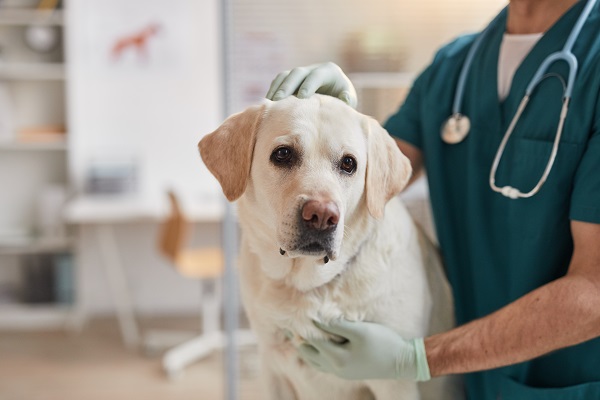If your dog has a food allergy, it can be hard to identify the issue. As a pet parent, these symptoms may not be what you expect. There are a lot of myths regarding food allergies in dogs. For starters, true food allergies are not that common among dogs. Here, we will discuss ways to know whether your baby suffers from food allergies or not.
When people think of food allergies in dogs, they will assume they are happening because of gastrointestinal problems they are facing. However, it is not necessary that your dog’s food allergy would be linked to its stomach.
Skin and ear problems among dogs who suffer from food allergies
Skin problems are common among dogs who suffer from food allergies. At first glance, this may seem odd, but when you think about how people react to food allergies, this makes more sense to you. If you do not check food allergies in your dog, they may have issues with their ears too.
Some of the common issues dogs with actual food allergies face are below:
- Chronic itchiness
- Frequent infections in ears
- Skin lesions occur when a dog harms itself. They can scratch the itch – also known as hot spots. In such a condition, the area gets hot, inflamed, and moist because the dog constantly licks, scratches, and chews those areas. They occur on their head, chest, and hips and become so painful that you cannot touch them.
- Foot infections such as bacterial infection or yeasts.
- Hair loss
- Skin infections
- Non-stop scratching of ears, face, paws, and back could drive you crazy.
A dog could also exhibit the same symptoms because of environmental allergies owing to triggers such as the following:
- pollen
- mold
- house mites
However, these are seasonal to start with. For this reason, it is important to track if your dog’s symptoms are flowing and ebbing with the change of the seasons.

The clinical signs of food allergies in dogs
Besides what we have said, dogs suffer from digestive disturbances such as diarrhea or vomiting when they experience food allergies. Diarrhea can often happen the day after eating the food they are allergic to, and it may or may not be accompanied by vomiting. Apart from these, they could suffer from chronic gas if they eat food they are allergic to.
They may also exhibit some subtle symptoms, such as the following:
- hyperactivity
- weight loss
- reduction of energy
- aggression
Chronic ear infections
If your dog has frequent ear infections, it means you are getting them treated more than twice or thrice a year. These are one of the most evident signs that your dog has food allergies. Ear infections can happen because of common reasons such as yeast infections, swimmers’ ears, and ear mites.
However, if the ear infection persists throughout the year, it could be due to a food allergy. It looks like yeasty and stinky ears with either brown or black build-up. They keep scratching their ears and shaking their ears with some persistence.
Even if you clean their ears frequently, such as several times a week, it does not prove effective in preventing a reoccurrence is concerned. You would find that over-the-counter otic ointments are not that successful as they are merely treating the symptoms rather than addressing the root cause of the problem.
Red, bronze, or brown nail beds
It is the easiest to observe in dogs with white nails, such as the white bully breeds like Dalmatians, Bulldogs, Boxers, and Spaniels. In this case, you would see that the base of your dog’s nails has turned red. They may look bloody as well. It is a clear sign that their immune systems are inflamed, and they are responding accordingly. If your dog’s nails are white, they should ideally be of that color at all times, with a quick pink.
However, if their nail bed bases are brown, red, or red-brown, it indicates something wrong. In these cases, their nails become sensitive, and your dog would lick or itch them a lot.
Read Also: 7 Tips For Teaching Your Dog To Accept Nail Trims
Bronzing around their lips
It is once again highly noticeable in dog breeds that have white coats. You would notice that their lips, skin, or feet appear inflamed. It could look like yeast colonization triggered by allergies.
As we have said, the lips, toes, and jowls would appear to be red, inflamed, or pink. Your dog would be itching quite often too. It implies either a food allergy. You must not make the mistake of assuming that this is a yeast infection or sunburn.
You can try wiping the affected area with a mixture that includes apple cider vinegar and purified water in equal parts. Add apple cider vinegar – ½ or ¼ tablespoon – to your dog’s food or diet to discourage yeast growth and reduce acidity.
Itchy skin, dull coat, and redness underbelly
If your dog has all these signs, it may indicate they are suffering from food allergy. In these cases, your dog would keep carrying on itching without relief. It could cause loss of hair in the affected patches. In these cases, it looks as if the skin underneath their hair is pink or red, inflamed, and dry.
No matter how many times you bathe them, use conditioners, or administer over-the-counter allergy medicines, if there does not seem to be a relief.
They scratch excessively, and it rarely seems to stop. It could be an environmental allergy apart from being a food allergy.
Watery eyes
Dogs could suffer from allergies just like humans. Some of us contract hay fever with symptoms such as itching. We may get dermatitis at times with stuffy noses and watery eyes. If a dog scratches their ears quite often, it may have a clogged tear duct or goopy discharge that leads to excessive tear production.
It can lead to irritation and staining. Apart from a food allergy, this could be a case of environmental allergy. However, you must not take this to be a case of eye trauma at all.
You can try dabbing your dog’s eyes with a warm, clean, and wet washcloth – this needs to be done a minimum of once each day so that the affected area can be kept clean. Finally, along with treatments, it is better to consult the vet first.
Read Also: Common Food Allergen Sources in Dogs
Frequently Asked Questions – Food Allergies in Dogs
What is the usual food allergy in dogs?
Food allergies and intolerances are common in dogs and can lead to different symptoms. The sources of food allergy in dogs are enumerated below:
- Beef
- Dairy
- Wheat
- Eggs
- Chicken
- Lamb
- Soy
How quickly does food allergy become evident in dogs?
If it is a severe case, your dog may have an immediate reaction. It could mean breaking out of hives, vomiting, and swelling shortly after they have ingested the food they are allergic to.
How to know what is causing the allergy in my dog?
You can find out if your dog suffers from environmental or seasonal allergies with blood or skin test. The latter is the most accurate form of allergy test.
Which breeds of dogs are more vulnerable to allergies?
The following breeds are likelier to suffer from allergies:
- Chinese Shar-Pei
- Wirehaired Fox Terrier
- Golden Retriever
- Dalmatian
- Boxer
- Boston Terrier
- Labrador Retriever
- Lhasa Apso
- Scottish Terrier
What to do if I think that my dog has a food allergy?
If you think your dog has any food allergies, fix an appointment with the vet to seek the right treatment. It is the right thing to do to seek an appropriate treatment plan.
Conclusion
If your dog has food allergies, it can be a highly frustrating experience for your dog and you. Food allergies would not be curable by any allergy medications that respond to their immune systems that go awry whenever your dog eats anything they are allergic to.

 DogExpress
DogExpress




















 in Chandigarh, India.
in Chandigarh, India. 
